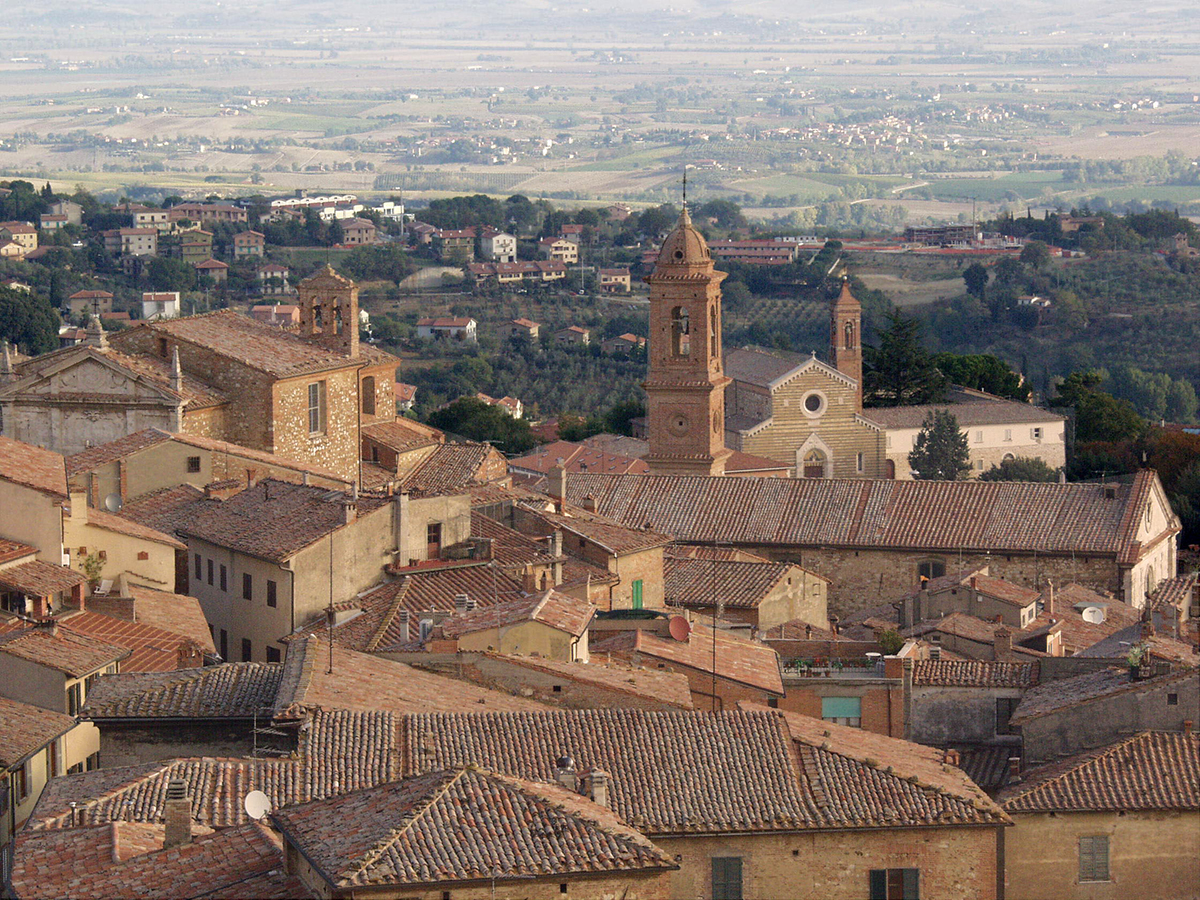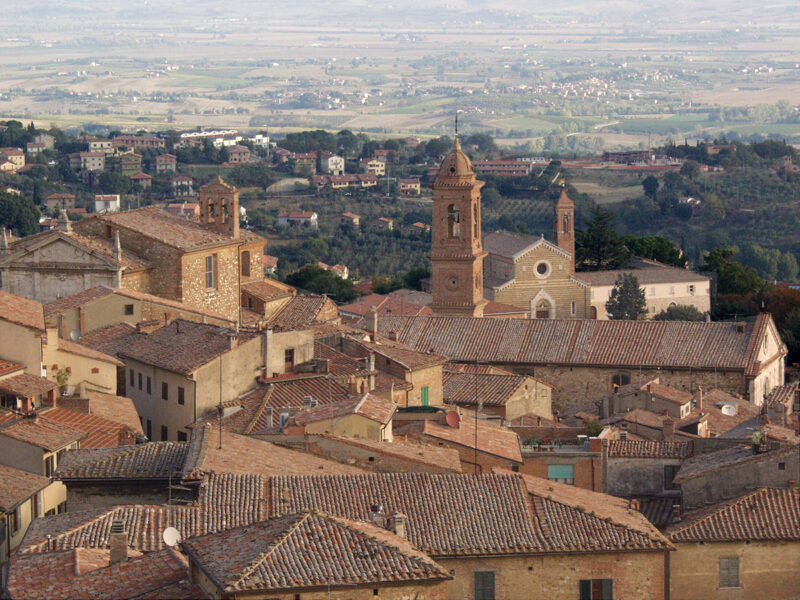
Setting out from Arezzo, we traveled south to the very famous hilltop town, and one I have always wanted to visit, Montepulciano. After a walking tour of the town, we enjoyed a very special meeting with the Count of Montepulciano in his 1000-year-old cellars followed by dinner with his wines matched to each course. Montepulciano is a medieval and Renaissance hill town and commune in the Italian province of Siena in southern Tuscany. Montepulciano is renowned for its pork, cheese, “pici” pasta, lentils, and honey, it is known world-wide for its wine.
Our local guide bid us farewell as the sun set over the hills of Tuscany and this magical town gave us a true medieval look as shadows meld thee ancient cobbled streets. We traveled across the Grande Piazza not knowing that we would soon be below the Piazza walking through 1000-year-old cellars with The Count of Montepulciano, and the head of the Contucci family who was hosting our visit. We first enjoyed the castle and home of the Contucci family, where they have lived for over 1000 years– grand being the understatement.
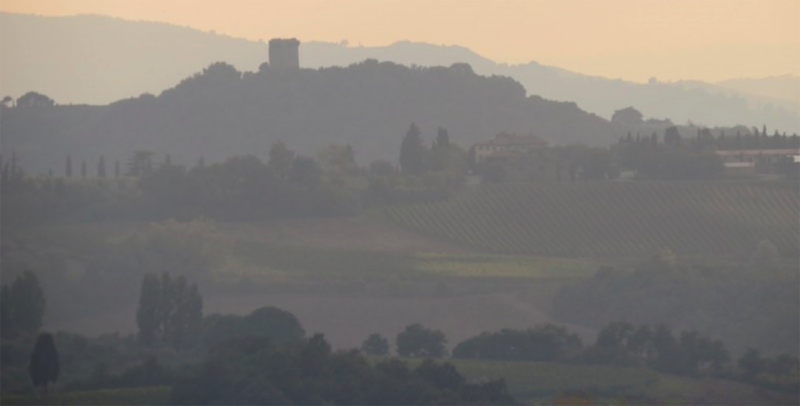
We walked down under the Piazza and through mazes of tunnels, listening to stories of how these tunnels actually have paths leading for miles below the city. The Contucci family is one of the oldest families in Montepulciano and they have been cultivating grapes since Renaissance times. Of their 170-hectare estate, 21 hectares are vineyards, with 15 hectares dedicated to Vino Nobile. The remaining six hectares are used for the Rosso Di Montepulciano, Bianco della Contessa, Il Sansovino, Vin Santo and Bianco della Contessa. The Palazzo Contucci on Piazza Grande is the residence of the Contucci family as well as the location of their cellar. All the wines produced by the Contucci estate are matured in oak barrels here. The cellar entry is just off the main piazza.
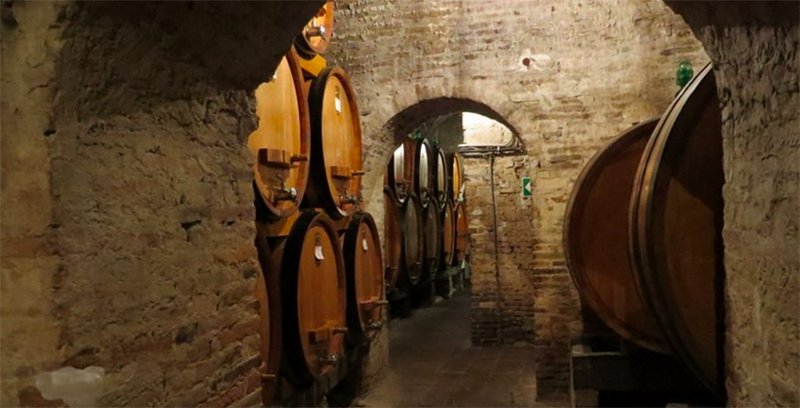
As far back as the Renaissance the Contucci family were cultivating the grape, and they were one of the “founding fathers” of Vino Nobile. The key grape variety grown here Sangiovese (known locally as Prugnolo Gentile), the same variety used to make another of Tuscany’s other great red wines, Brunello di Montalcino. Sangiovese grapes must make up at least 60–80 percent of the final wine, and may be complemented by Canaiolo (10–20 percent) and other local varieties permitted in the province of Siena, including the rare, violet-scented Mammolo (Sciacarello). Vino Nobile di Montepulciano is usually maroon-red in color and takes on a subtle brick-orange tint over time. It is characterized by its dark cherry and rich plum aromas, ripe strawberry and cherry fruit flavours, and a gently tannic ‘tea-leaf’ finish. Some have described the wine as having the perfume of Chianti Classico’s with the richness of Brunello di Montalcino. Montepulciano also produces sweet, white Vin Santo di Montepulciano, and Rosso di Montepulciano – a dry red made in a more modern style, with fewer tradition-bound constraints.
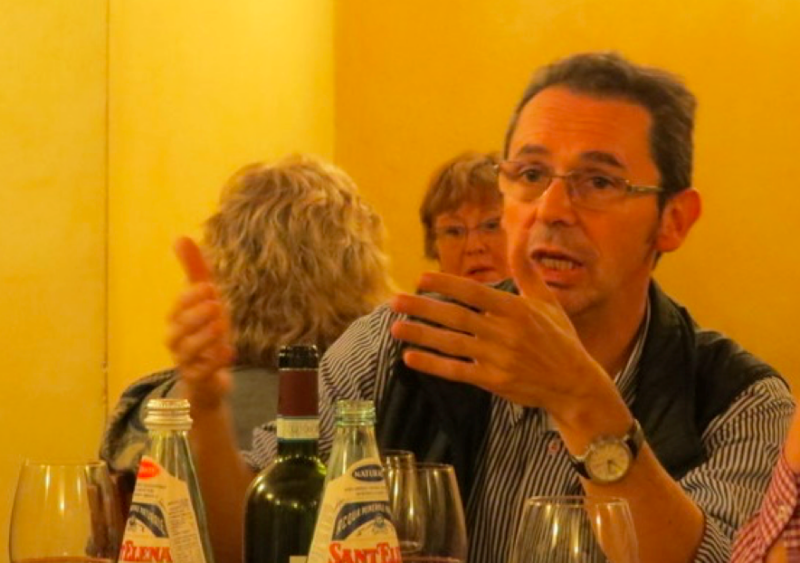
In time for dinner, we are escorted by the Count to the family owned Trattoria Osteria del Conte, where we savored a six course dinner matched with six of the best wines from Contucci. Antipasto del Conte, followed by a Prima Piatti of Pici al Ragu, and a ravioli pasta with Pecorino, then a pork fillet with Tuscan lard (amazing), then cheese, pecorino of course. Definitely do the tasting offered at their cellars, they are all outstanding wines. I have seen a lot of Italy, but Montepulciano was right up there with the best.
About the author: Since 1999, Bruce White has been traveling Italy, returning every year to a different region with pre-planned wine and food experiences. Some have been with food and wine tour operators in small groups, some planned directly with local specialists to ensure something very local and very special. With this network of contacts and a desire to return as often as possible, Bruce launched Wine and Food Traveller to share experiences with those who share the same passion for the Italian Lifestyle.


